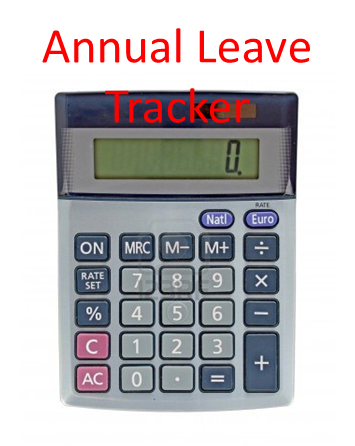All you need to know about HR!
Supporting Business Owners, Directors and HR Professionals with the latest in HR trends and news.
April 2020
Risk Assessments – Working from home
Working from home guide
Employers are not obliged […]
Tips to Manage Remote Working
Tips to manage your remote workers
Working from home – COVID 19
Effective ways to keep employees productive while […]
Data Subject Access Requests during COVID-19
Data Subject Access Requests (DSARs)
Do the timelines for responding […]
March 2020
GDPR – Data Protection during COVID-19
GDPR Compliance: How to manage your Data Protection during Covid-19? […]
Employer COVID-19 Refund Scheme
Employer COVID-19 Wage Subsidy Scheme
Employer Covid-19 Updates: […]
COVID-19 Updates – Employers guide
Last Updated: 14:40 27/10/2020
Lay-off’s during COVID-19 […]
October 2019
Bank Holiday Entitlements in Ireland
With the October Bank Holiday weekend fast approaching we thought you might find some information on Public Holidays and the relevant employer obligations/responsibilities around pay useful!
There are nine Public Holidays in Ireland each year - they are:
• New Year's Day (1 January)
•St. Patrick's Day (17 March)
•Easter Monday (Changes every year)
•The first Monday in May, June & August
•The last Monday in October
•Christmas Day (25 December)
•St. Stephen's Day (26 December)
Here is a breakdown of the statutory outline of Public Holiday Entitlements under Irish Employment Legislation:
Did you know that employees scheduled to work on a Public Holiday are entitled to an additional day's pay for the day?
For instance, let's take “Employee A” as an example – “Employee A” works on the day the Public Holiday falls - let's say “Employee A” is a retail store employee and is required to work on St. Stephen's day as it is the first day of the store's seasonal sale - On a normal working day “Employee A” earns €100.
This means that “Employee A” is entitled to receive the usual €100 for the hours worked on the Public Holiday as well as an additional €100 - So “Employee A” receives €200 for working on the Public Holiday. If there is any ambiguity in ascertaining what an additional day's pay should
equal the employer should look at the last day worked prior to the Public Holiday.
“Employee B” represents an employee who is normally scheduled to work on a day that a Public Holiday falls but is not required to work on that day (for example - an administrative assistant in a bank who typically works 09:00-17:00 Monday – Friday, who is not required to work on
Easter Monday).
“Employee B” should receive their normal day's pay for that day as well as not being required to work on the Public Holiday. On a normal working day “Employee B” receives €200. When a Public Holiday falls “Employee B” will not be required to work on this day as the business is closed. “Employee B” will still receive their normal day’s pay.
New Year's Day (1 January)
•St. Patrick's Day (17 March)
•Easter Monday (Changes every year)
•The first Monday in May, June & August
•The last Monday in October
•Christmas Day (25 December)
•St. Stephen's Day (26 December)
Here is a breakdown of the statutory outline of Public Holiday Entitlements under Irish Employment Legislation:
Did you know that employees scheduled to work on a Public Holiday are entitled to an additional day's pay for the day?
For instance, let's take “Employee A” as an example – “Employee A” works on the day the Public Holiday falls - let's say “Employee A” is a retail store employee and is required to work on St. Stephen's day as it is the first day of the store's seasonal sale - On a normal working day “Employee A” earns €100.
This means that “Employee A” is entitled to receive the usual €100 for the hours worked on the Public Holiday as well as an additional €100 - So “Employee A” receives €200 for working on the Public Holiday. If there is any ambiguity in ascertaining what an additional day's pay should
equal the employer should look at the last day worked prior to the Public Holiday.
“Employee B” represents an employee who is normally scheduled to work on a day that a Public Holiday falls but is not required to work on that day (for example - an administrative assistant in a bank who typically works 09:00-17:00 Monday – Friday, who is not required to work on
Easter Monday).
“Employee B” should receive their normal day's pay for that day as well as not being required to work on the Public Holiday. On a normal working day “Employee B” receives €200. When a Public Holiday falls “Employee B” will not be required to work on this day as the business is closed. “Employee B” will still receive their normal day’s pay.
 The one that can cause the most confusion is the case of “Employee C” –
Employees who are not normally scheduled to work on the Public Holiday will receive one-fifth of their normal weekly pay for the day. “Employee C”, for instance, works Wednesday – Friday and receives €100 per day in remuneration. If a Public Holiday falls on a Tuesday, even though “Employee C” never works that day he or she still has the right to benefit from the Public
Holiday in some way.
“Employee C” is still entitled to be paid a certain amount as a benefit for the Public Holiday (one-fifth of their normal weekly pay). If this employee earns €300 per three day week (Wednesday-Friday) they are entitled to earn an additional €60 during a week where a Public Holiday falls on a Monday or Tuesday.
The above rules will apply for all Public Holidays.
The one that can cause the most confusion is the case of “Employee C” –
Employees who are not normally scheduled to work on the Public Holiday will receive one-fifth of their normal weekly pay for the day. “Employee C”, for instance, works Wednesday – Friday and receives €100 per day in remuneration. If a Public Holiday falls on a Tuesday, even though “Employee C” never works that day he or she still has the right to benefit from the Public
Holiday in some way.
“Employee C” is still entitled to be paid a certain amount as a benefit for the Public Holiday (one-fifth of their normal weekly pay). If this employee earns €300 per three day week (Wednesday-Friday) they are entitled to earn an additional €60 during a week where a Public Holiday falls on a Monday or Tuesday.
The above rules will apply for all Public Holidays.
August 2019
Parental Leave – Employer Advice
Parental Leave Entitlement
Changes Regarding Parental Leave
Parental Leave allows […]
December 2018
Annual Leave Entitlements Guide Ireland
Annual leave is paid time off work that employees are granted by their employers - it can be used for whatever the employee wishes. It is important for employees to recharge the batteries and annual leave helps maintain a motivated and productive workforce. It is essential to note that the employer is statutorily obliged to provide a certain amount of annual leave to his or her employees. An employer can, of course, provide more leave than he or she is obliged to give – if an employer offers more leave to employees with long service histories or employees who exceed targets, for instance, this policy should be clearly defined and should be applied fairly across the board. Regardless of the employee’s status or length of their service everyone is entitled to annual leave. All time worked is eligible for paid holidays.
Here is an easy guide to assist employers in working out what leave should be allocated to each employee:

There are three methods used to work out leave entitlements:
a) The most common method used is: 4 working weeks in a leave year during which the employee works a minimum of 1,365 hours (Unless the employee has changed employment during that year). b) 1/3 of the employee’s working week per calendar month of at least 117 working hours (Eg: 1.67 * 12 = 20 days) c) 8% (.08) of the hours worked by the employee in the leave year (the total is not to exceed 4 working weeks) In some instances an employee’s leave could be worked out using more than one of the approaches listed above – where this is the case all applicable methods should be calculated and the employee shall be entitled to the highest result. Remember - the maximum statutory annual leave entitlement is four of his / her normal working weeks.How to calculate an employee’s annual leave pay:
Not everyone works a 9-5 office job and not all employees earn the same gross figure on a weekly basis so here is a guide on how to determine holiday pay due to various categories of employees: (a) If the employee’s pay is calculated by a fixed rate or a salary then the figure due to the employee per week of paid annual leave is equivalent to the amount he or she received for the normal weekly working hours last worked - This payment includes any regular bonus or allowance (that isn’t based on work completed) - it excludes any overtime pay. 
August 2018
Increase In The National Minimum Wage – Employer Advice
Increase In The National Minimum Wage
Changes Regarding The National […]
‘Low Hour’ & ‘Zero Hour’ Contracts – Employer Advice
‘Low Hour’ & ‘Zero Hour’ Contracts
GDPR
General Data Protection Regulation [GDPR]
Glossary of Terms and Definitions […]
October 2017
Risk Assessment for Pregnant Employees
As soon as an employer has received written notification of pregnancy from an employee, a risk assessment should be carried out.
The employee should give their employer a copy of any advice that their Doctor/Midwife has given them if it could have an impact on the pregnant employee’s risk assessment. The risk assessment’s purpose is to evaluate the employee’s ability to carry out their role and to identify any possible risks to mother and baby.
 Examples of some risks are:
Examples of some risks are:
- Standing/sitting for long periods
- Lifting/carrying heavy loads
- Threat of violence in the workplace
- Long working hours
- Excessively noisy workplaces
- Exposure to toxic substances
- Work-related stress
- Workstations and posture
 The Department of Social Protection pays Health and Safety Benefit after the first three weeks of Health and Safety Leave has passed. In order to qualify for Health and Safety Benefit, you must meet certain criteria and PRSI contribution conditions. Employees are still considered to be in employment so they continue to accumulate their annual leave entitlement. However, they are not entitled to payment for public holidays that occur while on Health and Safety Leave.
It is essential that the employer regularly monitors and reviews any assessment made to take account of the possible risks that may occur at the different stages of pregnancy.
The Department of Social Protection pays Health and Safety Benefit after the first three weeks of Health and Safety Leave has passed. In order to qualify for Health and Safety Benefit, you must meet certain criteria and PRSI contribution conditions. Employees are still considered to be in employment so they continue to accumulate their annual leave entitlement. However, they are not entitled to payment for public holidays that occur while on Health and Safety Leave.
It is essential that the employer regularly monitors and reviews any assessment made to take account of the possible risks that may occur at the different stages of pregnancy.

September 2017
September HR News Update
September 2017 – Employee Payout Claims
Failure by […]















